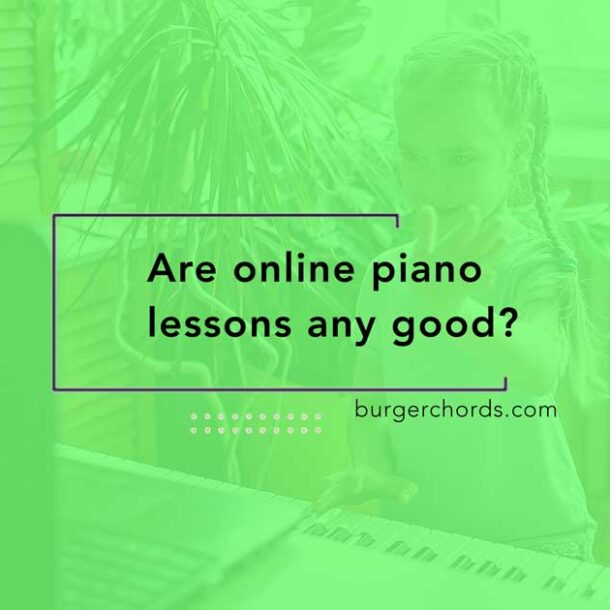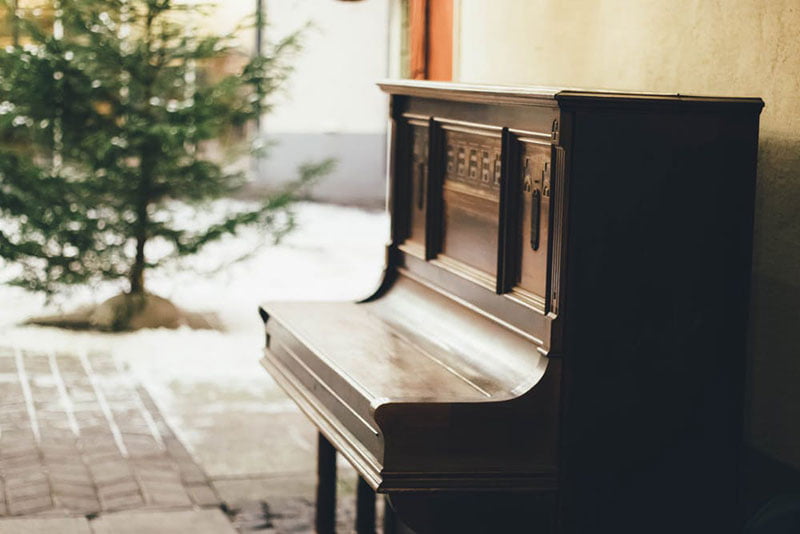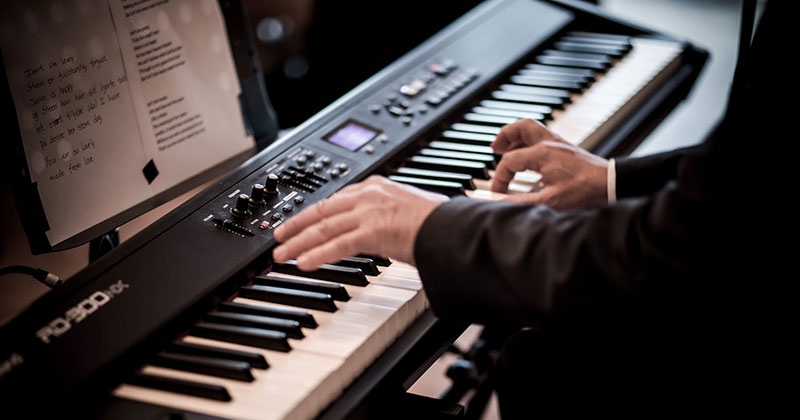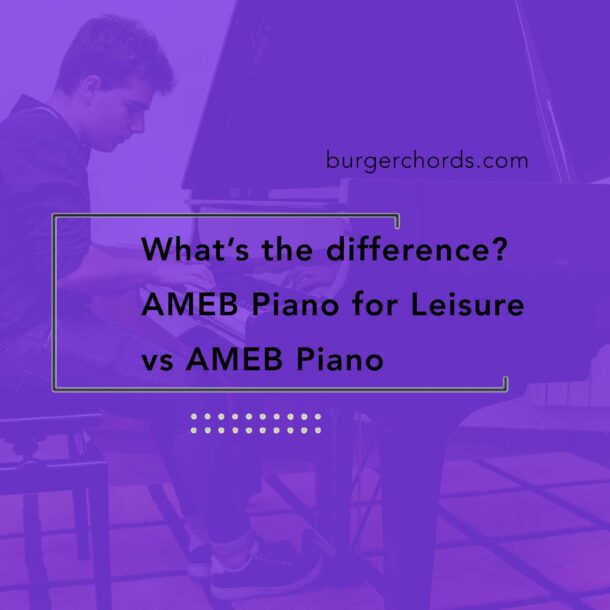

To start playing the piano, one must first have a piano! This seems simple, but it’s often where most new players get stuck. There are so many options out there for piano and keyboards, with price points that range anywhere from $50 to $50k (and more!). Therefore, it can be overwhelming to know what is the best piano for beginners.
Here, I’ll discuss the features that are best for beginner piano players. Rather than just listing brands or models, I’ve listed key features to look for at various price points. That way, you can determine what’s best for you and your budget.
Pianos and prices listed here are typical of what you may find in Australia, so this may vary if you’re elsewhere!
$50-$100 – Toy Keyboards
Look for: toy keyboards
Watch out for: tiny keys — toy keyboards are only suitable for young kids or someone with really skinny fingers!
Keyboards at this price range are often marketed as ‘toys’ rather than ‘musical instruments’. You can find them in the toy departments at chain stores like Big W or Toys ‘R Us. This may seem like an unlikely candidate for ‘best piano for beginners’, but these mini keyboards are great for absolute beginners because they’re simple and cheap. For very young kids, plastic toy keyboards can take a bashing with a worry.
$150-$300 – Beginner Keyboards
Look for: fun features like light up keys!
Watch out for: extras like power supply may not be included
Beginner keyboards are generally smaller, with around 48-61 keys. This is certainly big enough for absolute beginners to start on and transition later to a piano. Often, these keyboards are onboarded with hundreds of songs, tones, and rhythms. My personal favourite feature is light-up keys! These features are gimmicky, but fun for kids play around with.
At this price range, it’s worth checking if your keyboard comes with a power supply unit. Surprisingly, this is not always included. Nevertheless, if your keyboard doesn’t come with one, you can buy a generic power adaptor easily at a music shops or Jaycar-type store. They usually cost around $50-$60.
$400-$700 – Touch Responsive Keyboard
Look for: touch-responsive or touch-sensitive keys
Watch out for: keyboards vs digital pianos
For beginner piano players, “touch sensitive” or “touch responsive” keys are highly recommended. This means the keys can play loud or soft if hit hard or gently. Touch response makes a huge difference in playing, so this feature is worthwhile looking for in a beginner instrument.
When shopping, you may also come across listings for “keyboards” and “digital pianos”. Keyboards and digital pianos are very different instruments. Generally, keyboards have lighter plastic keys, as opposed to digital pianos which have “full-sized” weighted keys. Around this price range, you’ll find good quality keyboards or low-end digital pianos.
$800-$1200 – Beginner digital pianos
Look for: scaled hammer action or weight-graded keys
Watch out for: extras like piano stand and piano pedals may not be included
This is a great price point for entry-level digital pianos, new or second-hand. Generally, digital pianos at this price point will have “scaled hammer action” or “weight-graded” full-sized piano keys. This means the keys are heavier in lower notes and lighter in the higher notes. By doing so, they emulate the mechanics of an acoustic piano. For beginners, this weight will improve technique and feels naturally responsive to play.
One down-side, entry-level digital pianos generally come piano only. You may need to factor in extra to get a piano stand, pedals, and bench. For a beginner, you can make do without a stand and bench, but it’s worth buying a cheap sustain pedal (about $30).
$1200-$2000 – Digital Pianos with nifty features
Look for: nifty features like bluetooth
Watch out for: maximum polyphony – go no lower than 90 notes
This is a popular price range for digital pianos, and you’ll have heaps to choose from if you’re able to shop around this budget. You can also find features like Bluetooth, which is nifty for connecting a wireless device. I frequently plug my phone in to play backing tracks, so being able to do away with cables is a nice convenient feature!
The feature to watch for at this price point is “maximum polyphony”. This refers to the number of notes that can ‘sound’ at the same time. Think of the amount of sound that is happening when playing with the sustain pedal pressed down. A low polyphony count may start to cut these nice tones off. Admittedly, this only makes a nuanced difference to sound quality, so this may not phase you as it doesn’t affect playability.
$2000-$4000 – Full Digital Piano Setup
Look for: great sound quality
Watch out for: studio keyboards vs digital pianos
As you move up the price range in digital pianos, you start to see a big difference in sound quality. This is in part thanks to bigger speakers. These digital pianos tend to be bulkier in order to house these larger components.
Being bigger also means they’re not as portable as their cheaper counterparts. These digital pianos are intended for installation in your home like you would an acoustic piano.
Around this price, you’ll also see studio keyboards. Studio keyboards are also called synthesizers, digital workstations, sequencers, or controllers. These instruments have more of a focus on sound variety and control, whereas digital pianos are specifically emulating the mechanics of an acoustic piano.
Both options are great, but synth shopping can be an endless rabbit hole of options. For beginners, I’d suggest keeping things simple with a digital piano. Later on, you can always add a synth, like an extra string to your bow.
$4000-$7000 – Student Acoustic Pianos
Look for: student upright acoustic pianos
Watch out for: second-hand acoustic pianos
There are two popular types of acoustic pianos; upright and grand pianos. This price point is the entry-level for a decent acoustic upright piano that’ll last a lifetime. I was very lucky as a beginner to have the opportunity to learn on an upright piano. In fact, I still play on the same acoustic piano! (It’s the piano you see on the Burger Chords home page). An acoustic piano is no doubt an investment, not only in terms of money, but also in the amount of space it takes up and ongoing maintenance to tune, dust, and polish. For this reason, I don’t recommend buying an acoustic piano lower than this price point.
If you’re looking at a cheaper or second-hand acoustic piano, I’d recommend sticking to reputable piano shops who can assure quality, rather than a private seller. It’s also worth asking a piano player, or even better a piano tuner or piano appraiser, to go test-play the instrument.
For beginners who are able to start on a beginner acoustic piano, lucky you! It’s a worthwhile investment and an incredible instrument to learn on!
$8k+ – “Silent” Pianos
Look for: “silent” pianos
Watch out for: cheap baby grand pianos
One interesting option at this price point are “silent pianos”. These are acoustic upright pianos that are set up to also play digitally. They have strings and play like a normal acoustic piano would, but you have the incredible option of plugging in headphones and playing with no external sound! There are also baby grand piano versions for about $13k+.
Keep in mind though, these “silent pianos” still need the same amount of upkeep and tuning as any acoustic piano. Given the complexity of the electronics and moving parts, you may need a specialised technician to maintain your silent piano.
In terms of acoustic pianos, you’d be looking at upright pianos at this price. If you’ve got the space and budget for a baby grand piano, then it’s worth steering clear of cheaper options. While $8000 isn’t “cheap”, it is on the low end for a baby grand piano.
I’ve seen baby grands at this price advertised by private sellers, and am wary of descriptors like “sticky keys” or “needs tuning”. A caring owner will keep their piano regularly tuned and serviced, so when selling it should already be in great playing condition. Keep clear of owners who have not maintained their pianos properly, as problems are hard to spot and often can’t be fixed.
Offers for free acoustic pianos

Unfortunately, I have yet to come across a free piano worth bringing home. This is not to shun free offers, but rather highlighting the true cost of a free piano.
Firstly, it’s expensive to transport a piano. For pianos, you need specialist movers. General movers do not have the training or gear needed to avoid injuring themselves or damaging the instrument.
Secondly, acoustic pianos don’t get better with age. Wood is a temperamental material, and there are many factors that may affect the lifespan of the instrument — sunlight, humidity, temperature, positioning, maintenance, care etc. Commonly on old pianos, keys stop working, and worse its soundboard gets warped. Oftentimes, these problems can’t be fixed without causing further damage.
Thirdly, old pianos are hard to tune. Especially if it hasn’t been tuned for a long time, piano strings and soundboard may not be able to handle being stretched back into the right key. For this reason, piano tuners recommend several visits to tune an old piano, which makes this a costly venture with no guarantee that the piano can be tuned.
But the worst cost is the enjoyment of playing. I have met beginners who inherited an old piano, tried to learn but gave up thinking they were no good at it. But it’s impossible to make any piano with broken keys and deadwood sound good. Playing on a difficult instrument makes learning a chore rather than a fun music adventure.
A free piano is worth considering if you want it for its “honky-tonk” quirkiness. Say, if you’re a recording artist or producer. But for a beginner wanting to learn to play, it’s absolutely worthwhile buying an instrument in any of the price ranges listed above.
Can beginners learn on a MIDI keyboard?
Yes! MIDI keyboards refer to keyboard controllers that do not have any onboard sounds or speakers. They play as any other keyboard would, but to make a sound you just need to take one more step to connect it to a MIDI source.
You can easily do this by hooking a MIDI keyboard up to your phone or laptop. You’ll just need the right cables and adaptors. The set up is simple, but does involve more steps than simply switching the ‘on’ button on your keyboard, which can be tiresome for beginners.
Other piano costs for beginners to consider
Music stand
Even if you don’t play with sheet music, having a music stand to hold your phone or notebook or pencil saves a LOT of time and annoyances. You can get a stand that attaches onto your instrument or a standalone one. If you can upgrade to a bigger music stand, do it. It’s a simple lifesaver that makes playing easier.

Digital piano stand
If you don’t want your keyboard sitting on the floor or dining table, you’ll need a piano stand. For a smaller lightweight keyboard, a cheap ‘X’ keyboard stand will do the trick and costs around $40-$80. I like stands with a “clamp lever” because they’re easy to fold and unfold without fear of jamming any fingers.
Heavier digital pianos are better off on a sturdy table or set up with a proper wooden piano stand. This way you can slam those keys Beethoven-style without danger of it toppling over.
Piano bench
Honestly, for an absolute beginner, any old chair will do. After 6-12 months, if you’d like to continue playing and upgrade your keyboard set up, then it’s worth getting a decent piano bench. Surprisingly, decent piano benches are quite expensive.

Delivery fee
Digital and acoustic pianos are heavy and awkwardly big to carry. Even a portable digital piano designed for gigging musicians are over 15kg. Plus, if you’re getting the full setup with piano stand and pedals, they’re heavy too.
Consider the delivery and installation fee of transporting and setting up a bulky digital or acoustic piano home. Retailers who usually offer free online delivery may have disclaimers excluding pianos due to their size and weight. Check directly with the seller before you add to cart.
Piano tuning for acoustic piano moves
Every time an acoustic piano is moved, you’ll need to tune it and give it time to “settle in” to its new space. Simply because, during the move, the moving parts inside your piano move too and bend and stretch the strings.
If buying an acoustic piano, even brand new or recently tuned, you’ll need to tune it again soon after installing it in your house.
Ready to try a piano lesson?
Is piano leasing a good option for beginners?
Some beginners are uncertain of whether piano is the right instrument for them. In this case, leasing an instrument might be a good short-term option. Lease periods are usually a minimum of 6-months, which is a good amount of time to suss out if piano is for you.
What is the best piano for beginners?
The piano is a great first instrument because there are options for all budgets. Therefore, the best beginner piano for you is a matter of how much you’re willing or able to spend. It’s worth remembering that you don’t necessarily need to start on a full-sized piano. Smaller keyboards and even MIDI keyboards are great to start those fingers moving. Stick to your budget, and you can always grow and upgrade as you progress.
For me, the best piano for beginners is one the student gets excited to play. This can simply mean an instrument that’s easy to turn on or open the lid and play without a fuss. Drawing from experience as both a teacher and music student, the easier the instrument is to play, the more it will be played!

About the piano teacher
Michelle is a freelance pianist and piano teacher who aspires to make music fun and accessible for anyone who wants to play. She’s been playing and teaching piano to kids and adults for over a decade, and brings good vibes playing piano for weddings and events at Michelle Plays Piano.
Michelle also plays drums in post-punk and indie bands around Melbourne, and has written about bands for The Music and EARMILK. When she’s not obsessing over music, she’s probably thinking about food.



